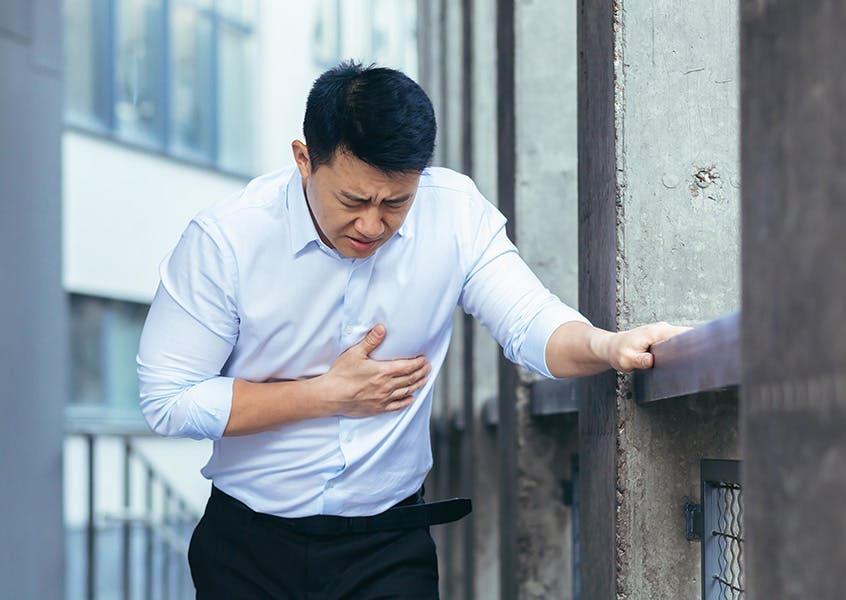In 2020, over 1.8 million people worldwide died from lung cancer, and by 2022, data from the National Cancer Institute revealed that no fewer than 40 people in Thailand die from lung cancer each day. It is the third leading cause of death for Thais, after liver and bile duct cancer. Annually, 31,920 lung cancer cases are reported, accounting for 22.8% of the total 140,000 cancer cases. This makes lung cancer a disease we should not overlook. Today, let's dive deeper into understanding lung cancer.
What Causes Lung Cancer?
Lung cancer results from the abnormal growth of cells in the lungs, where these cells multiply rapidly and uncontrollably. Over time, they mutate into malignant tumors, growing larger and eventually impairing lung function. Early stages of lung cancer often have no symptoms, making it a silent threat. Patients typically experience symptoms only after the cancer has spread significantly. To reduce the risk, we need to be aware of both controllable and uncontrollable risk factors for lung cancer.
Controllable Risk Factors
· Smoking and Exposure to Secondhand Smoke: Cigarettes contain cancer-causing toxins that affect both smokers and those exposed to secondhand smoke. The harmful chemicals in cigarettes include tobacco, flavoring agents, and additives, which can linger in the air for up to five hours. Key toxins and their effects include:
o Benzene: A carcinogen often linked to inhaling fumes from chemical plants, oil rigs, or vehicle emissions. Overexposure can cause dizziness, confusion, or even seizures.
o Polonium-210: A radioactive substance found in tobacco plants contaminated by soil and fertilizer. Inhalation can damage lung cells’ DNA, leading to mutations and cancer.
o Cadmium: A heavy metal commonly found in battery and steel factories. It can damage genetic material, causing abnormal cell division and eventually cancer.
o Lead: Another heavy metal that, when inhaled over time, increases the risk of lung cancer. It’s typically found in industries like battery production, construction, and mining.
o Ammonia: Found in household cleaners, prolonged exposure can irritate the respiratory system, leading to chronic inflammation and an increased risk of lung cancer.
o Tar: A sticky substance in cigarette smoke that adheres to the lungs, contributing to lung cancer.
· Environmental Toxins: Exposure to pollutants like PM2.5, vehicle exhaust, industrial smoke, and asbestos from everyday items like hair dryers, kettles, toasters, and irons can increase lung cancer risk.
Uncontrollable Risk Factors
· Age: The risk of lung cancer increases after age 40, especially for smokers. Non-smokers exposed to secondhand smoke also have a 20-30% higher risk.
· Family History: Those with a family history of lung cancer are 2-3 times more likely to develop the disease than those without such a history.
People living in areas with high dust levels, such as near factories or congested roads, are at greater risk of inhaling particles that can accumulate in their lungs. Even those working in enclosed spaces, like offices or malls, are at risk of lung cancer from small, invisible particles in the air.
Symptoms of Lung Cancer
Lung cancer symptoms can be divided into respiratory and non-respiratory categories. Respiratory symptoms are the most common, usually emerging when the tumor grows large enough to compress the airways or blood vessels. These symptoms include shortness of breath, chronic cough (either dry or with phlegm), sometimes accompanied by blood. Non-respiratory symptoms may occur when the cancer spreads to other parts of the body, such as hoarseness, difficulty swallowing, loss of appetite, bone pain, and swelling of the neck, arms, chest, and face.
Lung Cancer Treatment Options
The treatment approach depends on the type and stage of lung cancer. There are three main types of treatment:
1. Surgery: Primarily used in the early stages when the cancer hasn’t spread. Surgery can be performed either through open surgery (thoracotomy) or video-assisted thoracic surgery (VATS).
2. Radiation Therapy: High-energy radiation is used to destroy cancer cells. It’s ideal for patients who cannot undergo surgery. Radiation types include:
1. Stereotactic Body Radiation Therapy (SBRT) for small tumors.
2. Intensity Modulated Radiation Therapy (IMRT).
3. 3D Conformal Radiation Therapy (3D-CRT) for precision targeting of the cancerous area.
4. Proton Therapy, which minimizes damage to surrounding organs.
3. Medication and Immunotherapy:
1. Chemotherapy: Kills cancer cells but may cause side effects like hair loss, nausea, and fatigue.
2. Targeted Therapy: Slows cancer growth with minimal side effects but is expensive.
3. Immunotherapy: Stimulates the body's immune system to fight cancer cells, with fewer side effects and can also treat other cancers like liver, skin, kidney, and colon cancer.
Lung cancer remains one of the leading causes of death in Thailand, even among non-smokers. You can reduce your risk by avoiding known risk factors, such as staying indoors during high pollution, wearing dust masks, using air purifiers, and maintaining regular lung health check-ups. For Krungthai-AXA Life Insurance customers interested in health insurance tailored to all lifestyles, visit https://www.krungthai-axa.co.th/th/products/health-insurance-and-hospital-income/ihealthy-ultra for more information.
References:
· Siriraj Hospital
· Bumrungrad Hospital
· Faculty of Pharmacy, Prince of Songkla University
· Pobpad
· American Cancer Society
· Petchivej Hospital
· Centers for Disease Contral and Prevention
· Bangkok Hospital
· WHO
https://bit.ly/48i7Mf0
· Office of the Health Promotion Fund (HSF)
https://bit.ly/3TvYmbE
· Phyathai Hospital


